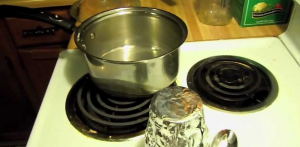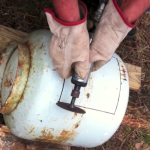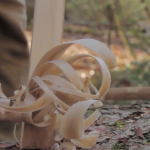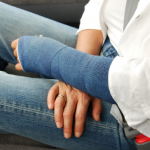
Bleach by itself can be toxic if ingested and harmful to the skin. However, you can process ordinary household bleach into a safe and effective antiseptic solution that can kill germs, clean wounds and minimize the destruction of surrounding tissues and cells. Take a look at this excellent DIY video recipe that has been used successfully ever since its development to sterilize battlefield injuries during WWI.
Ingredients
All you need is plain household bleach that is not scented or super concentrated. A simple bottle of Clorox or similar product that contains 5.25% sodium hypochlorite is the basis for this remedy. You also need some water, baking soda, a clean pan with lid along with some sterile measuring cups, spoons and a sterile jar with a lid as well.
Preparation
The first step is to pour four cups or 32 ounces of regular tap water into the clean pan. Bring to a rolling boil for between 10 and 15 minutes. Add ½ teaspoon of baking soda to the water and stir until it dissolves.
The next step is to determine the potency of the antiseptic you want to manufacture. The common practice is to choose between four different levels of strength. The proportions are as follows:
Full strength: Add 3 ounces of bleach.
1/2 strength: Add 3 tablespoons PLUS ½ teaspoon.
1/4 strength: Add 1 tablespoon PLUS 2 teaspoons.
1/8 strength: Add 2.5 teaspoons.
Add the desired amount of bleach to the boiled water, mix and then pour into the sterilized jars. Cover and allow to cool at room temperature. Make sure to label the jar to identify it as an antiseptic and then write down the date. The solution will look just like water, so it’s important that the label clearly identifies it as something that is harmful to ingest.
This antiseptic also has a very short shelf life and begins to become tainted after 48 hours after it has been opened. Cover the jar with a cloth or piece of foil and store in a dark and cool place. Keep it away from sunlight. However, if the jar is properly sealed and stored, it can last for about a month. Make sure that you dispose of any remaining solution 48 hours after opening, and make a new batch if necessary.
First Aid Use
Pour the solution directly onto the wound site and wipe away any impurities or debris with a gauze pad or sterile cloth. Apply a second round of treatment and cover with a gauze pad or sterile cloth and let soak for about 15 minutes. You can also douse the pad in the solution and apply it directly to the wound site. Irrigate or soak minor wounds with the solution once a day and twice a day for more serious injuries. You should consider coating the surrounding tissue with some petroleum jelly to minimize peripheral skin irritation.
Add antibiotic ointment if available and dress the wound accordingly. Change the dressings once or twice per day depending on the severity of the wound, and you can use this treatment for up to a week. If skin irritation, rash, redness or swelling occurs, decrease the potency of the solution. If these side effects persist despite lower doses, or if the wound does not show signs of improvement, seek professional medical attention as soon as possible.
The primary role of this solution is to kill germs, bacteria and certain viruses in order to prevent infection. However, its effectiveness will depend on the strength of the concentration, type of wound and the individual patient. You should always consider this as an alternative if other antiseptics are not available as opposed to a first line of defense.
However, this simple remedy can be very useful in a situation where you are far from access to medical care or common first aid supplies. Just remember to pay attention to the expiration date and monitor the wound for any negative changes or the development of side-effects.














